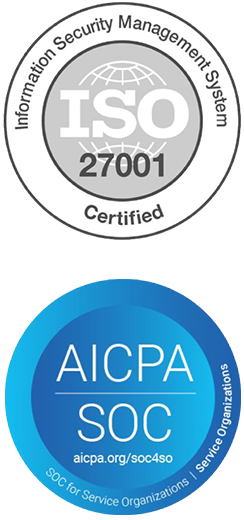Justperform
- EPM
- Thought Leadership
5 tips to migrate from legacy EPM solutions
As the business world is confronting unprecedented challenges, organizations’ need to plan better and remain proactive continues to rise.
Robust Planning integrated with analytics is indispensable to combat the unpredictable business world.
Many organizations, especially those using legacy Corporate Performance Management (CPM) solutions, plan to move to a new generation, the state-of-the-art planning & analytics tool.
The main reasons for the organizations to migrate to new-generation CPM tools could be:
- They offer a single unified solution that combines the power of Planning, Business Intelligence and Predictive Analytics with a better user experience.
- Their seamless integration and connection capabilities with various data sources and source systems
- Their ease of rolling out various planning functions to many users with no additional infrastructure costs, unlike other on-premise solutions.
There are significant reasons for migrations to new generation cloud platforms; however, the most pertinent question is how to effectively migrate from a legacy CPM solution to a cloud platform.
This blog post aims to provide you with relevant tips/ best practices for this migration
1. Choose the right path
Firstly, identify the need for your migration. There is no hard and fast rule that an organization needs to completely migrate all CPM processes to the cloud solution. It can also choose other scenarios like:
Hybrid CPM, where an organization can complement its planning in legacy solutions with reporting and analytics using modern tools.
Add new functional/departmental CPM activities in the modern tools while the enterprise-level CPM is done in legacy solutions. This enables better collaboration and visualization, thereby enhancing the agility in planning.
Based on the organization’s industry and its cloud readiness, completely migrate its CPM processes to the new generation platform.
Since there is more than one scenario, stakeholders need to decide the right scenario that works best. Complete migration of an organization’s existing planning processes is not the only option while an organization is thinking of shifting to new generation cloud platforms.
Pro Tip: Do a thorough internal assessment of your planning needs before choosing the right path.
2. Don’t lift and shift the processes
In many cases, migration is considered a mere lift and shift of all the models, transaction data, master data, dimensions and reports. However, a simple lift and shift of processes from legacy to cloud solutions may not be the most effective option.
The migration project gives the organization a golden opportunity to clean up the existing processes and models. If the existing system contains redundant objects like dimensions, master data or reports, this entire baggage gets migrated to the new solution, making the solution ineffective.
Hence, an in-depth assessment of all the modelling components in the existing legacy environment is pivotal in establishing a clean cloud solution.
Pro Tip: Performing an in-depth analysis manually can be quite tedious, consider using process mining & system assessment tools to accelerate this step.
3. Refine and Enhance the processes prior to migration
While a simple lift and shift may not be effective, it is of great significance to enhance the existing processes to meet growing business requirements. For instance, the migration project helps organizations re-address their golden circle approach for planning i.e. the ‘WHY’, ‘WHAT’ and ‘HOW’ of Planning.
It allows them to optimize their CPM processes and refine their KPIs, value drivers and metrics. This will ensure the processes in the new solution deliver results and improve business performance.
Pro Tip: Re-assess and Re-calibrate the organization’s CPM processes before migration.
4. Collaborate with business users before finalizing the process to be deployed
The success of an organization’s CPM journey is dependent on how well an organization is aligned in its entire corporate performance management. Unfortunately, collaboration in CPM processes is often restricted to data collection and data aggregation across departments. But it is more of an entire organization aligning on specific objectives, KPI’s and metrics that drive business performance.
Even while migrating, an organization needs to collaborate with all the relevant planners, finance users and information consumers across departments to finalize the requirements and KPI’s required for effective CPM.
Pro Tip: Don’t make the migration an IT department’s job. Involve all the business users responsible for enterprise performance management.
5. Eliminate manual inefficiencies involved in the migration
Migration requires many man-hours, especially if the organization is vast and the legacy solution covers processes across entities.
The high manual intervention leads to a rise in inefficiencies involved in the project. Hence, identify the tools that can assist or automate the tedious tasks like coding and assessment involved in the migration activity.
This helps in accelerating the entire project while improving its effectiveness.
Pro Tip: Perform detailed research in the market to identify tools/System integrators that automate major portions of the migration.
Since the migration from legacy solutions to new generation systems may not seem straightforward, organizations need to apply these tips/best practices to shift successfully.
Looking to move to a next-gen cloud platform for a streamlined CPM journey?
Adopt the JustPerform way of CPM and migrate seamlessly while applying all the above-mentioned best practices.
JustPerform is a new generation, intelligent Corporate Performance Management (CPM) cloud platform. It guides enterprises and organisations in business planning, consolidation, and performance monitoring. It helps them analyse the results that matter, discover insights, and plan for success. Unlike other vendors, JustPerform focuses on letting business users at all levels drive CPM activities, empowering them with an intuitive interface and industry best practices.
Summary
- Choose the right path
- Don’t lift and shift the processes
- Refine and Enhance the processes prior to migration
- Collaborate with business users before finalizing the process to be deployed
- Eliminate manual inefficiencies involved in the migration
You may also like
No Related Posts Found

